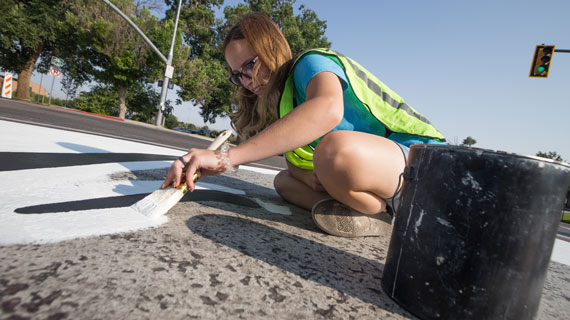Tips for Working in the Summer Heat
Posted: July 30, 2017 | Author: Southern Utah University | Read Time: 2 minutes
 Summer is a time for enjoying the outdoors with family and friends. But summer temperatures can make the outdoors dangerous if proper precautions aren't taken. In Cedar City, the average temperature in July and August push 90 degrees. While that's no 110 degrees like our southern neighbors (looking at you, St. George), there is always a chance of heat-induced illness in a high-temp area.
Summer is a time for enjoying the outdoors with family and friends. But summer temperatures can make the outdoors dangerous if proper precautions aren't taken. In Cedar City, the average temperature in July and August push 90 degrees. While that's no 110 degrees like our southern neighbors (looking at you, St. George), there is always a chance of heat-induced illness in a high-temp area.
These tips will keep you and your loved ones safe, healthy and happy this summer.
Drink more fluids (nonalcoholic), regardless of your activity level. Don’t wait until you’re thirsty to drink. Warning: If your doctor generally limits the amount of fluid you drink or has you on water pills, ask him how much you should drink while the weather is hot.
Don’t drink liquids that contain caffeine, alcohol, or large amounts of sugar-these actually cause you to lose more body fluid. Also, avoid very cold drinks, because they can cause stomach cramps.
Stay indoors and, if at all possible, stay in an air-conditioned place. Electric fans may provide comfort, but when the temperature is in the high 90s, fans will not prevent heat-related illness. Taking a cool shower or bath, or moving to an air-conditioned place is a much better way to cool off.
Wear lightweight, light-colored, loose-fitting clothing.
NEVER leave anyone or pets in a closed, parked vehicle.
If you must be out in the heat
- Limit your outdoor activity to morning and evening hours.
- Cut down on exercise. If you must exercise, drink two to four glasses of cool, nonalcoholic fluids each hour. A sports beverage can replace the salt and minerals you lose in sweat. Warning: If you are on a low-salt diet, talk with your doctor before drinking a sports beverage. Remember the warning in the first “tip” (above), too.
- Try to rest often in shady areas.
This article was published more than 3 years ago and might contain outdated information or broken links. As a result, its accuracy cannot be guaranteed.

